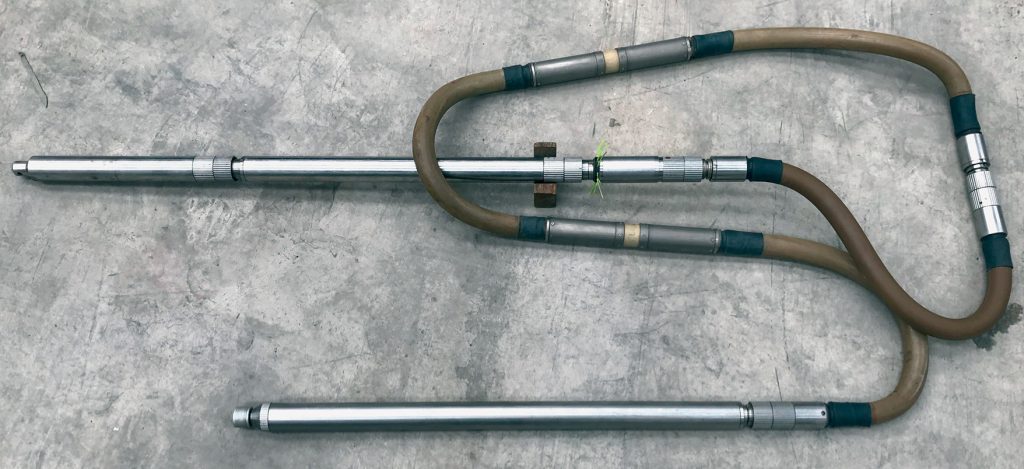In the evolving landscape of subsurface exploration and development, accurate and detailed characterization of geological formations is more critical than ever. Compressional and shear wave logging tools have become fundamental technologies in optimizing subsurface characterization, providing key insights that enable better decision-making in hydrocarbon exploration, reservoir management, and geotechnical engineering. This article delves into the principles, capabilities, and practical benefits of using compressional and shear wave loggers to enhance subsurface understanding.
Introduction to Subsurface Characterization
Subsurface characterization refers to the process of analyzing and understanding the physical, mechanical, and fluid properties of rock formations beneath the Earth’s surface. It is essential for evaluating reservoir quality, planning drilling operations, and designing effective extraction strategies.
Importance of Accurate Subsurface Data
Accurate subsurface data reduces uncertainties during exploration and production, lowers operational risks, and improves economic outcomes. Traditional logging tools have provided valuable measurements such as resistivity, porosity, and density, but these parameters alone often fall short of delivering a comprehensive picture of formation mechanics and fluid content. Acoustic logging, specifically through compressional (P-wave) and shear (S-wave) wave measurements, bridges this gap by providing direct information on rock elasticity, fracture properties, and fluid saturation.
Fundamentals of Compressional and Shear Wave Logging
What Are Compressional and Shear Waves?
Compressional waves, or P-waves, are seismic waves that propagate by compressing and expanding material in the direction of travel. They move faster than other wave types and can travel through solids, liquids, and gases. P-waves primarily reveal information about the bulk modulus and fluid content of formations.
Shear waves, or S-waves, travel slower and move material perpendicular to their direction of propagation. They can only travel through solids, making them particularly useful for assessing rock rigidity, fractures, and mechanical properties.
How Compressional and Shear Wave Loggers Work
Compressional and shear wave loggers utilize acoustic sources to generate seismic waves within the borehole. Multiple receivers positioned along the logging tool detect the waves as they travel through the surrounding rock. By measuring travel times, wave velocities are calculated. Since P-waves and S-waves respond differently to rock and fluid properties, analyzing both together enhances the interpretation accuracy.
Advantages of Using Compressional and Shear Wave Loggers
Comprehensive Rock Mechanical Property Assessment
By combining P-wave and S-wave velocities, engineers and geoscientists can derive critical mechanical properties such as:
- Young’s Modulus: Indicates rock stiffness.
- Poisson’s Ratio: Describes the ratio of lateral strain to axial strain.
- Bulk Modulus: Measures a rock’s resistance to uniform compression.
- Shear Modulus: Reflects the rock’s response to shear stress.
These properties help in identifying formation strength, fracture potential, and how rocks will behave under stress, which are vital for reservoir management and wellbore stability.
Enhanced Lithology and Fluid Discrimination
P-wave velocities are influenced by both rock matrix and pore fluids, whereas S-wave velocities are sensitive primarily to the solid matrix. The difference between these velocities can distinguish between gas, oil, and water saturation, as well as variations in lithology. This dual-wave analysis enables more reliable fluid typing and reservoir quality evaluation.
Fracture Identification and Anisotropy Analysis
Shear waves are highly sensitive to fractures and stress-induced anisotropy in rock formations. Logging tools equipped with multi-component receivers can detect shear wave splitting, which indicates fracture orientation and density. This information is critical in unconventional reservoirs where fracture networks govern fluid flow.
Applications of Compressional and Shear Wave Logging in Subsurface Characterization
Reservoir Characterization and Modeling
Detailed velocity data improves the calibration of seismic surveys and supports the development of accurate reservoir models. The information gained from compressional and shear wave logging enables better prediction of reservoir heterogeneity, porosity distribution, and fluid contacts.
Wellbore Stability and Drilling Optimization
Understanding rock mechanical properties through P- and S-wave data allows for better prediction of zones prone to collapse or instability. This knowledge helps engineers design drilling programs that minimize risks, optimize mud weight, and avoid costly downtime.
Hydraulic Fracture Design and Monitoring
In unconventional reservoirs, hydraulic fracturing is essential for enhancing permeability. Compressional and shear wave logs provide valuable data on natural fracture orientation and rock brittleness, enabling more effective fracture designs and improved stimulation outcomes.
Geotechnical and Environmental Studies
Beyond hydrocarbon exploration, these logging tools are used in civil engineering and environmental projects to assess soil and rock stability, monitor subsurface contamination, and plan tunneling or construction activities.
Challenges and Solutions in Using Compressional and Shear Wave Loggers
Challenges
- Complex Formation Conditions: Highly heterogeneous or unconsolidated formations can complicate wave propagation and interpretation.
- Signal Attenuation: In certain lithologies, acoustic signals may weaken rapidly, reducing data quality.
- Tool Calibration: Ensuring accurate calibration and correction for borehole effects is essential.
Solutions
- Advanced Signal Processing: Techniques such as full waveform inversion and machine learning improve data quality and interpretation.
- Multi-Component Tool Design: Tools with multiple receivers and transmitters capture diverse wave modes and directions.
- Integration with Other Logs: Combining acoustic data with resistivity, density, and imaging logs enhances overall subsurface models.
Future Trends in Compressional and Shear Wave Logging
Emerging technologies aim to improve the resolution and efficiency of acoustic logging:
- High-Frequency Acoustic Sources: Providing finer detail in wave measurements.
- Real-Time Data Analysis: Allowing immediate interpretation and decision-making during drilling.
- Integration with Fiber Optic Sensing: Enabling continuous monitoring of wave propagation and formation changes over time.
Conclusion
Optimizing subsurface characterization through compressional and shear wave logging offers unparalleled insight into rock and fluid properties, greatly enhancing exploration and production success. By accurately measuring elastic parameters, identifying fractures, and discriminating fluid types, these tools support safer drilling, better reservoir management, and more efficient hydrocarbon recovery. As technology advances and integration with other data sources improves, compressional and shear wave logging will continue to be an indispensable asset in subsurface exploration and geotechnical applications.





Comments